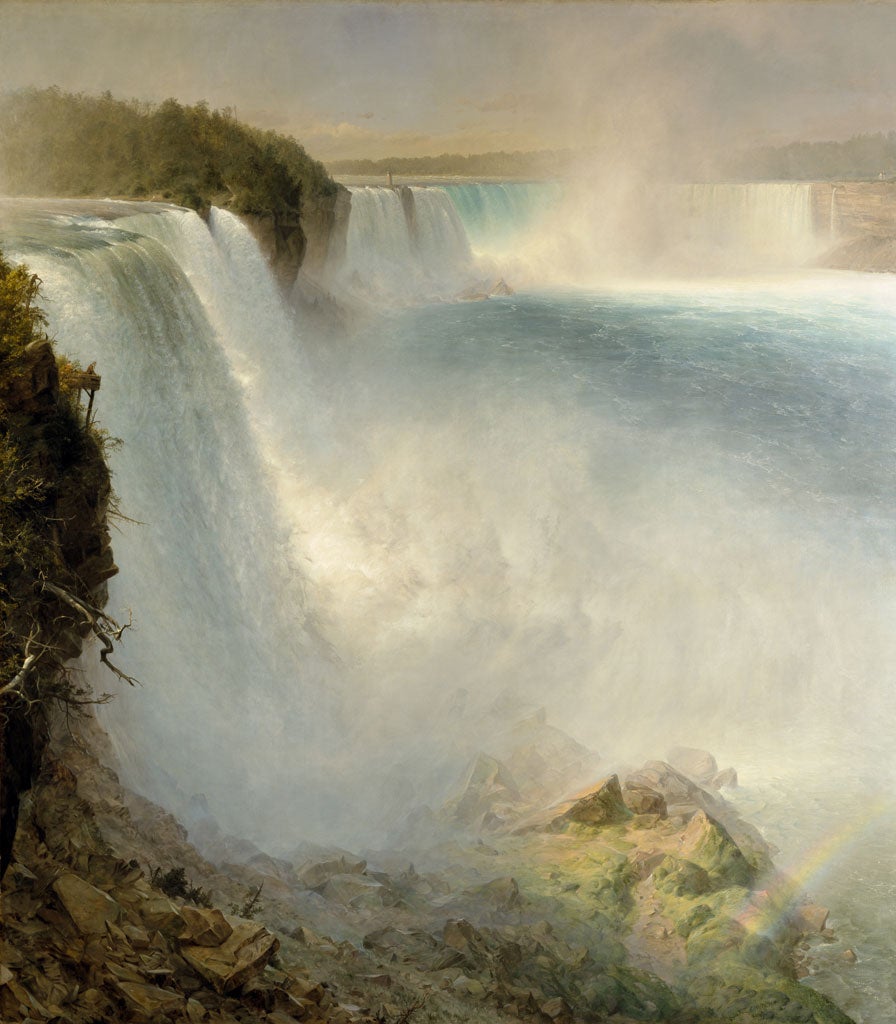Great Works: Niagara Falls, from the American Side, 1867 (260cm x 231cm), Frederic Edwin Church
Scotland National Gallery, Edinburgh

Your support helps us to tell the story
From reproductive rights to climate change to Big Tech, The Independent is on the ground when the story is developing. Whether it's investigating the financials of Elon Musk's pro-Trump PAC or producing our latest documentary, 'The A Word', which shines a light on the American women fighting for reproductive rights, we know how important it is to parse out the facts from the messaging.
At such a critical moment in US history, we need reporters on the ground. Your donation allows us to keep sending journalists to speak to both sides of the story.
The Independent is trusted by Americans across the entire political spectrum. And unlike many other quality news outlets, we choose not to lock Americans out of our reporting and analysis with paywalls. We believe quality journalism should be available to everyone, paid for by those who can afford it.
Your support makes all the difference.Water for its own sake. The roiling immensities of water when seen from the cliffs above Le Havre, for example – all that beguiling shape-shifting, all that tonal tricksiness – as Monet would have seen it... Yet how many painters in the Western tradition really took water seriously as a subject for art before the 19th century? Answers on the back of a postage stamp? The seas were there all right, but they were backdrops to heroic naval skirmishes, a context in which to admire the outlandish, self-preening beauty of ships in full sail. They were also, soberingly, an enduring site of tragedy – there was always death by drowning to provoke a tear. And then, from later on in the 18th century, came the Romantic impulse. Water began to take on a life of its own. Two-thirds of the world's surface suddenly became interesting. Quite true? Well, let us say that it was found to have boundless imaginative possibilities in so far as it enabled the boundlessness of the self to be contemplated, boundlessly, and even reflected back at itself. And in the wake of all that renewal of water and its potential came Turner, Monet and.... Frederic Church.
And here is just one example of water sweeping us away, humbling the spectator as we stare and stare into its terrible, roaring eye. Yes, before the advent of the cinema, there were the paintings of Frederic Edwin Church of New York State. They went on tour. They were kept hidden behind curtains until the moment of revelation, which provoked aahs! of wonderment in the breathless spectator. They were often painted on an immense scale because their themes – the dramatic landscapes of America – called for immensity. By their size, and the sheer pugnacity of their presence, they were a stand-in for the real thing.
No painting is ever innocently topographical. All topographical paintings have designs upon us. How much politics is there here, for example? To what extent does the thundering majesty of the Falls represent, and somehow seem to embody, the muscle-flexing of America, that young, coming nation? Even as we look at it, Woody Guthrie's song in praise of the Grand Coulee Dam begins to play itself inside our heads: now the world has seven wonders that the traveller always tells...
Our own angle of view is nerve-wracking. We seem to be on the brink of being engulfed, plunged head-first into the maelstrom. At its centre, we look down into a kind of thickly glowing nothingness. Those two tiny spectators on the extreme left, standing on what looks like an extremely perilous wooden structure, show us the cowed, awe-struck human element. There is almost nothing but the no-holds-barred muscularity of water. Man must not meddle with this. It is too terrifying and too potent for mere man. And yet, Church seems to suggest, this is also, paradoxically, a spiritually benign scene. The way that the sunlight, crossed by the rainbow, falls upon that rocky outcrop at bottom right makes nature seem revelatory in some undisclosed, religiose way. This is a transcendental scene. We are awe-struck before nature's majesty. The fumy, cloud-like mist adds to our sense of slightly befuddled and even nervous awe because we cannot see exactly what it is that we are seeing. We cannot properly register the movement of the water. We cannot quite make out the curve of the Falls. The water, having fallen, with an almighty rush, feels as if it might be being rocked in a great basin. Our eyes grope to make sense of it all, to see exactly where the shoreline begins and ends. In suspense, we are suspended.
And yet the painter has conquered after all. He has reduced all this terror to a spectacle. He has tamed these waters and their capacity to pulverize. It thunders mutely.
ABOUT THE ARTIST Frederic Edwin Church (1826-1900) was an American landscape painter on the grand scale whose monumental canvases left spectators feeling humbled and awe-struck, bursting with nationalistic pride. Closely associated with the Hudson River School of painters, he built himself a mansion called Olana in the Moorish style just outside Hudson, New York State. It is worth a visit.
Join our commenting forum
Join thought-provoking conversations, follow other Independent readers and see their replies
Comments